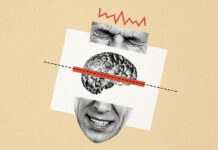A new study finds that for those experiencing symptoms associated with psychosis, a low-level of physical activity is associated with receiving a diagnosis of a psychotic disorder. Those with psychotic symptoms who had higher levels of physical activity were more likely to report no diagnosis.
This large cross-sectional study was aimed at exploring the relationship between physical activity and having psychosis (both subclinical, some symptoms without a diagnosis, and with a diagnosis of a psychotic disorder) in low-and-middle-income (LMIC) counties. Additionally, the authors explored the impact of potential mediators, including health status and depression. The results of the study suggest that receiving a diagnosis of psychosis is associated with physical inactivity, especially among males.

A growing body of literature suggests that physical activity can decrease the symptoms of numerous mental health difficulties. Research has linked physical activity with improved outcomes for depression and ADHD. Moreover, recent evidence has found that exercise can help improve cognitive functioning in persons with schizophrenia.
The authors of this study were specifically interested in examining the level of physical activity because of the increased risk of cardio-metabolic disease in individuals diagnosed with psychosis. They aim to build on previous evidence that physical activity helps in prevention and management of diabetes and cardiovascular disease. In addition, previous studies report that people diagnosed with psychosis engage in very low levels of physical activity.
The researchers assessed whether complying to 150 minutes of moderate-vigorous physical activity per week is related to having psychotic symptoms without a diagnosis (subclinical psychosis), and with having a psychosis diagnosis. Utilizing the World Health Survey, a total of 186 participants over 18 years of age and across 46 LMICs were separated into three groups: those with no psychosis diagnosis and no psychotic symptoms in the past 12 months (controls), those with psychotic symptoms, and those with a psychosis diagnosis.
Physical activity levels were determined via self-report with items from the International Physical Activity Questionnaire (IPAQ). Psychosis diagnosis was determined by asking the participants if they had ever been diagnosed with schizophrenia or psychosis and if they had in the last 12 months experienced positive psychotic symptoms. Those that endorsed 1 of the four psychotic symptoms were classified as having experienced psychotic symptoms.
Other health-related variables of interest included health status (mobility, self-care, pain and discomfort, cognition, interpersonal activities, vision, sleep, and energy) and the presence of depressive symptoms. Age, sex, wealth, education and setting variables were also collected. Variables included in the mediation were depression, mobility, self-care, pain and discomfort, cognition, interpersonal activities, vision, sleep and energy.
Overall, 24.3% of people with psychotic symptoms and no diagnosis had low-levels of physical activity while low-level rates of physical activity were seen in 33% of those with a diagnosis, and in 27% in those without any psychosis. When compared to those without a psychosis diagnosis, those with a diagnosis were more likely to be physically inactive.
Having psychotic symptoms without a diagnosis was not associated with low levels of physical activity. The results of the mediation analysis showed that mobility explained the largest percentage of the association (18.5%), followed by self-care (16.3%), depression (16.1%), cognition (11.8%), sleep and energy (7.2%), and vision (3%).
It is important to note that data on antipsychotic use was not gathered or accounted for in this analysis. Therefore, the authors cannot discount the possibility that the higher likelihood of low-levels of physical activity may be partially explained by the use of antipsychotic medication, especially given that those with a psychosis diagnosis are likely to have been prescribed antipsychotics.
The authors write, “. . . this difference may partially be explained by the use of antipsychotics as those with psychotic like experiences are unlikely to be taking antipsychotic medication.“
The researchers suggest that interventions seeking to increase levels of physical activities (especially among men) may help improve health outcomes.
****
Stubbs, B., Koyanagi, A., Schuch, F., Firth, J., Rosenbaum, S., Gaughran, F., … & Vancampfort, D. (2017). Physical activity levels and psychosis: a mediation analysis of factors influencing physical activity target achievement among 204 186 people across 46 low-and middle-income countries. Schizophrenia Bulletin, 43(3), 536-545. (Full Text)















A psychotic moose right here. http://www.snopes.com/photos/animals/moosemount.asp
Report comment
Psychotic dogs here. https://www.psychologytoday.com/blog/animal-emotions/201209/why-dogs-hump
Report comment
I’m curious. Were they inactive before or after they were officially diagnosed and “treated?” Either one seems plausible.
Exercise can be a good way to stave off depression or psychosis. On the other hand being drugged can make one tired and lethargic–leading to less exercise.
Report comment
Okay.Reread the article more carefully. Obviously it’s the drugs causing the lack of exercise. The only thing psychiatrists are good at is denial, it seems!
Report comment
“Psychosis” is a bullshit word. What is psychosis? A conflicted inner dialogue? Written of in the bible.
Matthew 19:22 Jesus told him, “If you want to be perfect, go, sell your possessions and give to the poor, and you will have treasure in heaven. Then come, follow Me.” When the young man heard this, he went away in sorrow, because he had great wealth.
Report comment